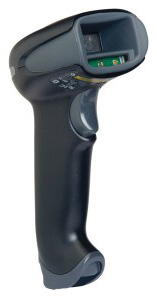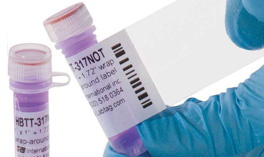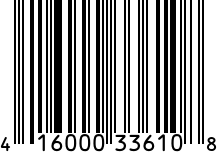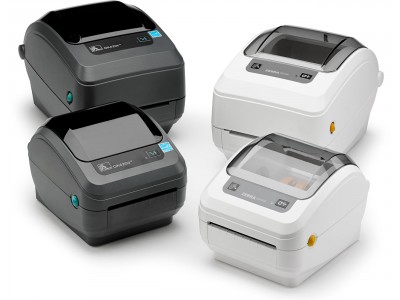In the world of AIDC (Automatic Identification and Data Capture), there are hundreds of terms, phrases and acronyms. It can be hard to keep up! There are several terms that some people mistakenly substitute for similar-sounding words, when in actuality, they are using the term in the completely wrong context.
Below are 10 of the most commonly used word substitutions that I’ve heard, along with their true meanings.
If you’re thinking about buying a barcode scanner to verify your barcodes, think again!
Barcode Verifier
A barcode verifier measures the bars and spaces of a barcode symbol, along with a barcode symbol’s “quiet zones” and optical characteristics, all for compliance purposes. It measures print quality and is used to determine whether a given barcode symbol meets specific requirements or standards for what makes a good barcode, which may be set forth by an industry or a business partner.
 Barcode Scanner
Barcode Scanner
A barcode scanner simply reads (or interprets) the data stored in barcodes. They are commonly known for their use in retail to:
- Check prices
- Read coupons
- Check inventory
But the truth is, they are used in almost every industry. Barcode scanners are everywhere including healthcare, education, government, transportation, logistics, and supply chain.
A term that actually is synonymous with barcode scanner? Barcode reader.
Asset Tracking![]()
Is a means of tracking the location of physical objects/assets as they move from one location to another. Items that are considered “assets” are those that actually belong to a company. In any given business, assets may include:
- computers,
- printers,
- furniture,
- vehicles.
- mechanical equipment and more.
Asset tracking ties in closely with accounting because assets depreciate in value over time and require maintenance to be kept up.
Inventory Tracking
Is a system used to define materials or stock that is kept on-hand. Inventory can be consumable or saleable. A small business, for instance, will likely have an inventory of rolls of tape, writing utensils, copy paper, printer toner, etc., which is consumable inventory. The same business will probably have a back room in which “for sale” items are stored. Both consumable and saleable inventory require tracking. Another term for inventory tracking? Inventory management.
RFID Tag
The most obvious difference here is that a barcode scanner does not read RFID tags. RFID tags are electronic tags that can receive, store and transmit data using radio-frequency electromagnetic fields. An RFID tag can only be identified or “read” using an RFID reader.
There are two types of RFID tags: Passive and Active.
Passive RFID tags do not have their own batteries, and get energy from a RFID reader, whereas active RFID tags have their own power supply. An everyday example of an active RFID tag in action is the E-ZPass® tag in your vehicle that you use for paying tolls on the highway. Each time you drive through a toll booth, the overhead antennae detects your personalized RFID tag and deducts from your account. Passive RFID tags might be found affixed to assets or files in a storage room.
Barcode Label
A barcode label is printed in black-and-white and affixed to an item to be scanned later using a barcode scanner/reader. A barcode label is physically read, whereas an RFID tag is electronically sensed by proximity to an RFID reader.
 UPC
UPC
This one is a little tricky because a UPC is a type of barcode, but the catch here is that there are many more types of barcodes than just the UPC. A UPC is a type of linear, or one dimensional, barcode that is well-known for its appearance on virtually all consumer products.
The term “barcode” has a much broader umbrella, which includes other linear barcodes, such as:
- Code39
- Codabar
- “stacked” linear barcodes, (such as PDF417)
- And two-dimensional barcodes, such as Data Matrix and QR Code.
Want to experiment with different types of barcodes?
Here is a free barcode generator for your barcoding pleasure.
 Direct Thermal
Direct Thermal
When it comes to printing barcodes, receipts, and more, direct thermal printing refers to using direct thermal labels, which are designed using a chemical treatment that detects heat and turns opaque, creating an image due to the heat.
Thermal Transfer
This type of printing uses heat, as well, but in this case, the print head itself heats a ribbon, and then the wax or resin is transferred to the substrate (paper, label, etc).
Now that you’ve had a chance to glance over the list and check your levels of knowledge (or lack-thereof), I’d like to hear from you. Are there any AIDC terms I’ve left off this list? Let me know on Twitter @L-TronCorp.
Questions?
![]() Call 800-830-9523 or
Call 800-830-9523 or ![]() Email info@L-Tron.com
Email info@L-Tron.com
About the Author:
 Carmella Giancursio is L-Tron’s Public Relations Specialist & Content Editor. When she’s not working, spending time with her husband, or taking care of her 3 young kids, she can be found in the kitchen, channeling her Italian heritage!
Carmella Giancursio is L-Tron’s Public Relations Specialist & Content Editor. When she’s not working, spending time with her husband, or taking care of her 3 young kids, she can be found in the kitchen, channeling her Italian heritage!














